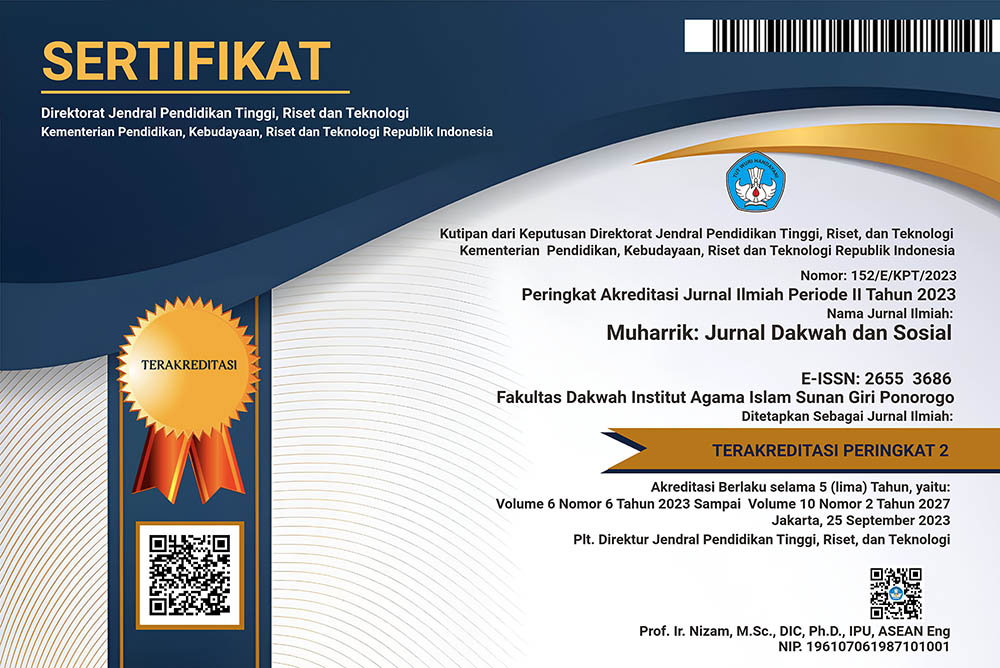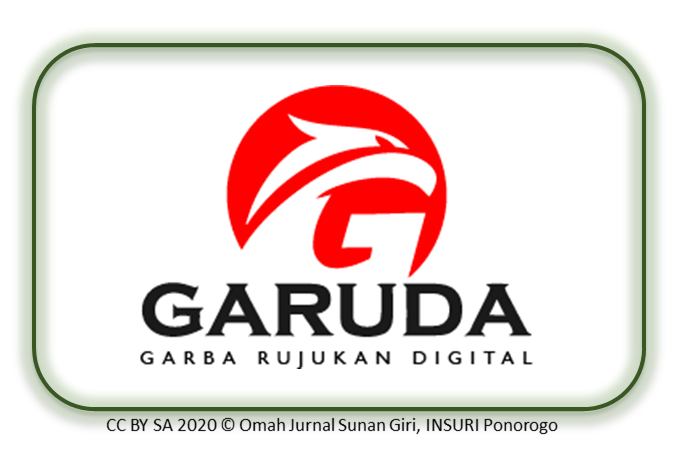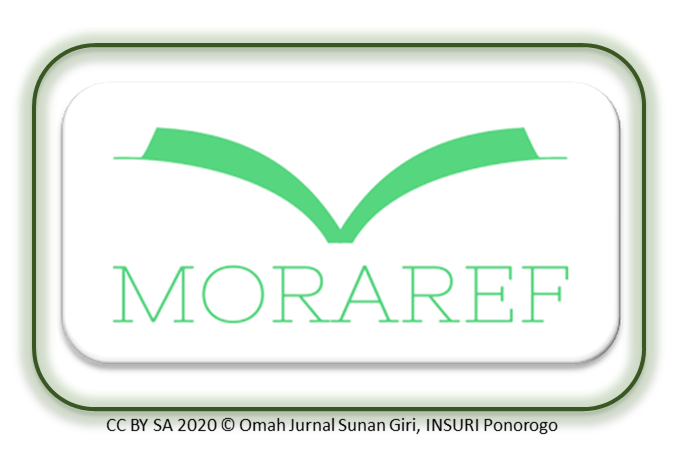Living the Message: Embodied Da'wah and Religious Tourism Innovation at the Sunan Muria Pilgrimage Site
DOI:
https://doi.org/10.37680/muharrik.v8i1.7369Keywords:
Da’wah bil Hal, Religious Tourism Service Innovation, Sunan Muria Mosque and Tomb FoundationAbstract
This study investigates da’wah bil hal through religious tourism service innovations at the Sunan Muria Mosque and Tomb Foundation, addressing the limited scholarly attention to how practical service improvements can function as a medium for Islamic proselytization. Using a qualitative descriptive phenomenological approach, the research captures the lived experiences of pilgrims to explore how specific innovations shape their spiritual engagement, sense of comfort, and overall safety during visitation. Rather than merely listing developments, this study analyzes how architectural enhancements, spatial reorganizations, and management reforms collectively foster a conducive environment for da’wah by embodying Islamic values of hospitality, cleanliness, and communal care. The findings contribute to the broader discourse on religious tourism and Islamic communication by demonstrating that service-oriented innovations, when guided by spiritual intent, can reinforce religious identity and deepen pilgrims’ spiritual experiences. This research advances the understanding of da’wah bil hal as a contextual, experience-based form of Islamic outreach embedded in contemporary pilgrimage practices.
Downloads
References
Abady, C. (2017). Attachment and Identification to Gus Dur: Study of Pilgrimage of Gus Dur’s Tomb in Jombang Regency, East Java, Indonesia.
Agung, J. A., Wiharjokusumo, P., Girsang, D., Saragih, N., & Karo-karo, S. (2024). Sacred Journeys And Sustainable Growth : Evaluating The Impact Of Religious Tourism On The Economic Development And Promotion Of Sibea-Beaas A Premier Destination In Samosir Island , North Sumatra Province , A . Introduction B . Literature Review. 1.
Anasom, A., Anafah, N., Sofwan, R., Fanani, A., & Adzfar, Z. (2018). Sejarah Sunan Muria. 254. http://eprints.walisongo.ac.id/8356/%0Ahttp://files/886/Anasom et al. - 2018 - Sejarah Sunan Muria.pdf%0Ahttp://files/887/8356.html
Ayorekire, J., Obua, J., Mugizi, F., & Byaruhanga, B. M. (2020). Opportunities and challenges of religious tourism development in Uganda: Policy, planning and institutional perspectives. International Journal of Religious Tourism and Pilgrimage, 8(3), 144–158.
Bahri Soi, A., Pahlawan Putra, A., Kamal Zubair, M., Markarma Yusup, A., & Megandani, A. (2023). Promoting Religious-Friendly Tourism for Developing Religious Harmony: A Study of Tourist Gaze. Heritage of Nusantara: International Journal of Religious Literature and Heritage, 12(1), 91–117. https://doi.org/10.31291/hn.v12i1.701
Boon Liat, C., Nikhashemi, S. R., & Dent, M. M. (2020). The chain effects of service innovation components on the building blocks of tourism destination loyalty: the moderating role of religiosity. Journal of Islamic Marketing, 12(9), 1887–1929. https://doi.org/10.1108/JIMA-02-2020-0061
Cahya, B. T., Waluyo, W., Andriasari, W. S., & Rubiana, P. (2020). Urgensi Halal Tourism Makam Sunan Kudus Untuk Pertumbuhan Ekonomi Masyarakat. Al-Masharif: Jurnal Ilmu Ekonomi Dan Keislaman, 8(1), 19–36. https://doi.org/10.24952/masharif.v8i1.2586
Citation Dwipayanti, N. M., Nastiti, A., Powell, B., Loehr, J., Hadwen, W., Vada, S., & Johnson, H. (2021). Guideline For Gender Equality, Disability, and Social Inclusion in Water, Sanitation, and Hygiene in the Community in Tourism Destinations. www.watercentre.org
Education, L. C., & Khan, L. A. (2022). Journal of management and education. 01, 30–44.
Fabio, C., Gian, C., & Anahita, M. (2016). New Trends of Pilgrimage: Religion and Tourism, Authenticity and Innovation, Development and Intercultural Dialogue: Notes from the Diary of a Pilgrim of Santiago. AIMS Geosciences, 2(2), 152–165. https://doi.org/10.3934/geosci.2016.2.152
French, K. L. (2007). : Art and Architecture of Late Medieval Pilgrimage in Northern Europe and the British Isles . In The Sixteenth Century Journal (Vol. 38, Issue 2). https://doi.org/10.2307/20478394
Gallouj, C. (2018). Service innovation: Towards a religious trajectory. A Research Agenda for Service Innovation, 3(April), 116–147. https://doi.org/10.4337/9781786433459.00011
Gordon, J. E. (2018). Geoheritage, geotourism and the cultural landscape: Enhancing the visitor experience and promoting geoconservation. Geosciences (Switzerland), 8(4). https://doi.org/10.3390/geosciences8040136
Hassan, T., Carvache-Franco, M., Carvache-Franco, W., & Carvache-Franco, O. (2022). Segmentation of Religious Tourism by Motivations: A Study of the Pilgrimage to the City of Mecca. Sustainability (Switzerland), 14(13), 1–19. https://doi.org/10.3390/su14137861
Heidari, A., Yazdani, H. R., Saghafi, F., & Jalilvand, M. R. (2018). The perspective of religious and spiritual tourism research: a systematic mapping study. Journal of Islamic Marketing, 9(4), 747–798. https://doi.org/10.1108/JIMA-02-2017-0015
Hussain, A., Li, M., Kanwel, S., Asif, M., Jameel, A., & Hwang, J. (2023). Impact of Tourism Satisfaction and Service Quality on Destination Loyalty: A Structural Equation Modeling Approach concerning China Resort Hotels. Sustainability (Switzerland), 15(9). https://doi.org/10.3390/su15097713
Iman Sulaiman, A., Nugroho Adi, T., Ganjar Runtiko, A., Rofik, A., & Weningsih, S. (2023). International Journal of Business, Economics and Social Development Empowerment of Socio-Economic Institutions in Religious Tourism Villages Based on Local Wisdom. 4(4), 321–331. https://journal.rescollacomm.com/index.php/ijbesd/index
Kaell, H. (2012). Of gifts and grandchildren: American Holy Land souvenirs. Journal of Material Culture, 17(2), 133–151. https://doi.org/10.1177/1359183512443166
Kusuma, A. M., & Varokh, A. N. (2023). Creative Economy Development of The Religious Tourism Makam Sunan Muria Kudus. Jihbiz : Jurnal Ekonomi, Keuangan Dan Perbankan Syariah, 7(1), 69–82. https://doi.org/10.33379/jihbiz.v7i1.2264
Liro, J. (2021). Visitors’ motivations and behaviours at pilgrimage centres: push and pull perspectives. Journal of Heritage Tourism, 16(1), 79–99. https://doi.org/10.1080/1743873X.2020.1761820
Maćkowiak, A. (2015). International Tourism and Local Religious Traditions on Two Indonesian Islands. Folia Turistica, November. http://folia-turistica.awf.krakow.pl/attachments/article/430/FT_37_2015.pdf#page=86
Mahavarpour, N., Marvi, R., & Foroudi, P. (2023). A brief history of service innovation: The evolution of past, present, and future service innovation. Journal of Business Research, 160(February), 113795. https://doi.org/10.1016/j.jbusres.2023.113795
Mahendra, D. (2024). The Impact of Tourism on the Preservation and Transformation of Cultural Identity in Bali, Indonesia. Studies in Social Science & Humanities, 3(6), 34–41. https://doi.org/10.56397/sssh.2024.06.05
Onwuegbuzie, A. J., Leech, N. L., & Collins, K. M. T. (2010). Innovative data collection strategies in qualitative research. Qualitative Report, 15(3), 696–726. https://doi.org/10.46743/2160-3715/2010.1171
Puspasari, D. A., & Sariffuddin, S. (2015). Peran Gender Dalam Peningkatan Kesejahteraan Masyarakat Desa Wisata Colo Kabupaten Kudus. Jurnal Tataloka, 17(4), 223. https://doi.org/10.14710/tataloka.17.4.223-230
Rinschede, G. (1992). FORMS OF RELIGIOUS TOURISM zyxwvutsrqponm. Annals of Tounrm Research, 19, 51–67.
Rohimah, A., & Romadhan, M. I. (2019). Marketing Communication Strategy of Halal Tourism Around Gus Dur’S Cemetery in Jombang. INJECT (Interdisciplinary Journal of Communication), 4(1), 1. https://doi.org/10.18326/inject.v4i1.1-14
Royadi, D., Susiana, N., & Khumaida, F. A. (2019). Effectiveness Management of Qualitative Research in Writing Scientific Papers. Aptisi Transactions on Management (ATM), 3(1), 84–90. https://doi.org/10.33050/atm.v3i1.848
Sanz, M. F., Ferrandis, E. D., & Ferrer, J. G. (2019). Service quality scales and tourists with special needs: A systematic review. Sustainability (Switzerland), 11(14), 1–12. https://doi.org/10.3390/su11143844
ST. M.PWK, D. A. (2022). Peran Kelompok Usaha Wisata dalam Penyediaan Fasiltas Wisata di Desa Colo, Kabupaten Kudus. Jurnal Litbang Provinsi Jawa Tengah, 19(2), 115–122. https://doi.org/10.36762/jurnaljateng.v19i2.859
Studi, J., Ekonomi, D. A. N., Dampaknya, D. A. N., Kehidupan, T., Lokal, S. M., Kpi, L. R., Mojokerto, S., Setyawan, W. A., & Mojokerto, S. (2020). Jurnal studi, sosial, dan ekonomi. 1(2), 78–83.
Susanto, L., Abdul Aziz Danu Brata, M., Rosian Adhy, D., & Hermawan, R. (2022). Implementasi Teknologi Informasi untuk Optimalisasi Wisata Religi di Kabupaten Tasikmalaya. Jurnal Saintesa, 2(1), 1–8.
Syahputra, H. (2022). Pengaruh Tangible Dan Fasilitas Terhadap Kepuasan Pengunjung Pada Wisata Religi Walisongo Di Pulau Jawa. Jurnal Ekonomi Syariah Darussalam, 3(2), 57–72. https://doi.org/10.30739/jesdar.v3i2.1665
Tourism, S. (2014). Central Lancashire Online Knowledge ( CLoK ) More than sense of place ? Exploring the emotional dimension of rural tourism experiences.
Truong, N. T., Dang-Pham, D., McClelland, R. J., & Nkhoma, M. (2020). Service innovation, customer satisfaction and behavioural intentions: a conceptual framework. Journal of Hospitality and Tourism Technology, 11(3), 529–542. https://doi.org/10.1108/JHTT-02-2019-0030
Wiyata, S., & Ayupuji. (2015). Faktor-Faktor Yang Mempengaruhi Kunjungan Wisata Diberbagai Objek Wisata Di Kabupaten Mojokerto. Jurnal Swara Bhumi, 1(1), 162–168. http://jurnalmahasiswa.unesa.ac.id/index.php/swara-bhumi/article/view/10635
Grönroos, C., & Voima, P. (2013). Critical service logic: making sense of value creation and co-creation. Journal of the Academy of Marketing Science, 41(2), 133-150. https://doi.org/10.1007/s11747-012-0308-3
Grönroos, C., & Voima, P. (2013). Making sense of value and value co creation in service logic. Service Science, 5(2), 126–135. https://doi.org/10.1287/serv.1120.0011
Normann, R. (2001). Service management: Strategy and leadership in service business (3rd ed.). Wiley.
Zeithaml, V. A., Bitner, M. J., Gremler, D. D., & Ajay, P. (2020). Services marketing: Integrating customer focus across the firm (8th ed.). McGraw-Hill Education.
Tawiluddin, N. (2021). Konsep dakwah dalam perspektif Abdurrahman Wahid (Gus Dur): Studi analisis metode dakwah. Jurnal Dakwah Tabligh, 21(2), 231–252. https://doi.org/10.24252/jdt.v21i2.24189
Sunarso, B. (2021). Dakwah Bil Hal as a Method of Dakwah in Society Muneng Ledokdawan Village, Grobogan Regency. Journal of Research and Multidisciplinary, 4(2), 493-498. https://doi.org/10.5281/jrm.v4i2.54
Vargo, S. L., & Lusch, R. F. (2004). Evolving to a new dominant logic for marketing. Journal of Marketing, 68(1), 1–17. https://doi.org/10.1509/jmkg.68.1.1.24036
Timothy, D. J., & Olsen, D. H. (2006). Tourism, religion and spiritual journeys. Routledge. https://doi.org/10.4324/9780203001073
Tlaiss, H. (2015). How Islamic business ethics impact women entrepreneurs: Insights from four Arab Middle Eastern countries. Journal of Business Ethics, 129(4), 859–877. https://doi.org/10.1007/s10551-014-2126-3
Khan, I., & Sláviková, L. (2021). Collaborative innovation, collaborative capabilities and value co creation in an Industry 4.0 context: An empirical evidence [Preprint]. https://arxiv.org/abs/2103.01192
Downloads
Published
How to Cite
Issue
Section
License
Copyright (c) 2025 Dedy Susanto, Najahan Musyafak, Lukmanul Hakim, Agus Riyadi

This work is licensed under a Creative Commons Attribution-NonCommercial 4.0 International License.
The author(s) retain/s the copyright and grant/s Muharrik: Jurnal Dakwah dan Sosial the first publication rights licensed under the Creative Commons Attribution-NonCommercial 4.0 International (CC BY-NC 4.0) , which allows others to access (search, read, download and quote), share (copy and redistribute the material in any media or format) and adapt (mix, modify and develop) works for legitimate non-commercial purposes, with recognition of the authorship of the work and its initial publication in this journal.












